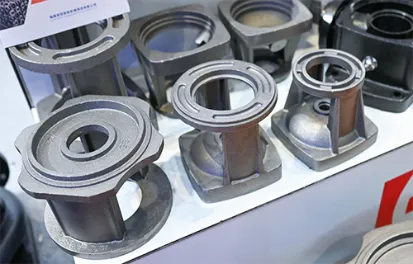Mobile:+86-311-808-126-83
Email:info@ydcastings.com
aluminum melting
Understanding Aluminum Melting Process and Applications
Aluminum is one of the most widely used metals in various industries, thanks to its remarkable properties such as lightweight, corrosion resistance, and excellent thermal and electrical conductivity. One of the critical processes in the manipulation and utilization of aluminum is melting, which plays a vital role in shaping this versatile metal for different applications.
The melting of aluminum refers to the process of heating solid aluminum until it reaches its melting point, which is approximately 660 degrees Celsius (1220 degrees Fahrenheit). This process is crucial for several manufacturing operations, including casting, extrusion, and fabrication. To understand aluminum melting better, it’s essential to explore the techniques utilized, the equipment involved, and the importance of controlling the melting environment.
There are several methods for melting aluminum, with electric arc furnaces, induction furnaces, and crucible furnaces being the most common. Electric arc furnaces use electrical energy to generate intense heat, while induction furnaces employ electromagnetic forces to create heat. Crucible furnaces, on the other hand, utilize a refractory-lined container to hold the aluminum while it is heated. Each of these methods has its advantages, depending on the scale of production and the required purity of the aluminum.
During the melting process, one of the critical factors to consider is cleanliness. Aluminum, when melted, is prone to contamination from oxides, moisture, and other impurities. Contaminated aluminum can lead to defects in the final product, affecting its mechanical properties and overall performance. To mitigate these issues, operators often employ fluxes during the melting process to help remove impurities from the molten aluminum surface.
aluminum melting

Temperature control is another crucial aspect of the melting process. Maintaining an optimal temperature ensures a uniform melt and facilitates the subsequent handling and pouring of aluminum. Overheating can result in oxidation of the aluminum and changes in its chemical composition, while underheating can lead to poor fluidity and casting defects. Advanced temperature monitoring systems are often integrated into modern furnaces to ensure precise control over the melting environment.
Aluminum melting is an essential part of numerous industrial applications. In the automotive industry, for instance, melted aluminum is poured into molds to create engine blocks, wheels, and other components that contribute to lighter, more fuel-efficient vehicles. Similarly, in the aerospace sector, aluminum's lightweight properties are capitalized upon to produce aircraft components that enhance performance and reduce fuel consumption.
Beyond traditional manufacturing, aluminum melting plays a significant role in recycling efforts. Aluminum is highly recyclable, and the melting process allows for the efficient reuse of scrap aluminum to create new products. This not only conserves natural resources but also reduces energy consumption because recycling aluminum requires only about 5% of the energy needed to produce virgin aluminum.
In conclusion, the melting of aluminum is a fundamental process that underpins various industries and applications. By employing advanced melting techniques and ensuring optimal conditions, manufacturers can harness the beneficial properties of aluminum, enabling innovations and advancements in technology. As the demand for aluminum products continues to grow, the importance of efficient and sustainable melting practices will only become more pronounced in the pursuit of a circular economy.
-
Why Should You Invest in Superior Pump Castings for Your Equipment?NewsJun.09,2025
-
Unlock Performance Potential with Stainless Impellers and Aluminum End CapsNewsJun.09,2025
-
Revolutionize Your Machinery with Superior Cast Iron and Aluminum ComponentsNewsJun.09,2025
-
Revolutionize Fluid Dynamics with Premium Pump ComponentsNewsJun.09,2025
-
Optimizing Industrial Systems with Essential Valve ComponentsNewsJun.09,2025
-
Elevate Grid Efficiency with High-Precision Power CastingsNewsJun.09,2025











